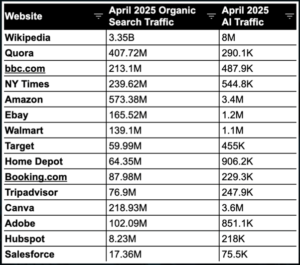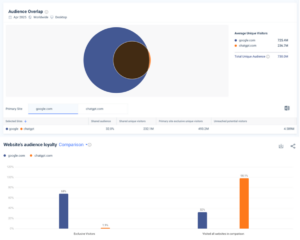The way we discover content, products and even brands online is changing. Fast. With AI reshaping the mechanics of search, new frameworks like Answer Engine Optimisation (AEO) and Generative Engine Optimisation (GEO) have entered many digital marketer’s vocabulary. But while these recent evolutions are significant, the answer isn’t to abandon SEO (and focus on the shiny new acronyms); it’s to adapt it.
There’s a clear need to understand how these frameworks differ and where they overlap. Yet there’s also a risk of over-engineering strategies that miss the bigger picture. At its core, it’s still about visibility, trust, and relevance.
In this article, VP Digital Marketing, James Gray, will explain what the differences are between SEO, AEO and GEO and how your business can adapt for the new state of AI-powered search.
What is Search Engine Optimisation (SEO)? SEO is the practice of increasing website visibility in search engine results pages (SERPs) to attract organic traffic.
What is Answer Engine Optimisation (AEO)? AEO involves creating content designed to provide direct answers to user queries, aiming to feature in SERP elements like Featured Snippets, People Also Ask boxes, or voice search responses (the artist formerly known as ‘Position 0’ – anything above the traditional fabled ‘blue links’).
What is Generative Engine Optimisation (GEO)? GEO involves optimising content for AI-powered platforms, such as ChatGPT, Google’s AI Overviews, or Perplexity, which generate summarised responses based on multiple data sources.
Despite the surge in AI hype, the data tells a more tempered story. According to research:


At the same time, AI Overviews and zero-click search results are on the rise. Google’s new AI-generated summaries aim to give users answers without needing to click through to a website. That means even if your content contributes to an AI answer, you might not see traffic from it. If Google can keep your entire visit in their ecosystem, they will.
This trend is important. Recent findings show that click-through rates have dropped in search results where AI Overviews appear. This presents a visibility paradox: your content might be referenced, even quoted, but the user doesn’t always make it to your site.
So, is that a loss?
Not entirely. This is where brand visibility takes centre stage. Appearing in AI-generated summaries, even without clicks, still reinforces brand credibility, especially when users encounter your brand across platforms. A useful currency in a noisy landscape.
Your brand becomes the destination – not just the website.
Brands should look to adapt from just “ranking in results” to “being the answer.” That requires trust-building content, strong entity optimisation and consistent brand signals across your entire digital presence.
While Google’s AI Overviews are zero-click by design (although you can still find some links/citation), tools like Perplexity offer a slightly different dynamic. Perplexity cites sources more explicitly and links users to the exact sites where its summaries are drawn from. In some cases, it can increase traffic for publishers, especially when your content is seen as authoritative and well-structured.
Other AI discovery platforms, like You.com or Brave Search, are following similar models. This means:
AEO and GEO aren’t here to replace SEO, they’re here to extend it.
If your content isn’t clear, structured, or contextually rich, AI tools may ignore it, or worse, misrepresent it. That’s where GEO becomes critical: making your content machine-readable and semantically sound.

You don’t need to throw away your SEO playbook. But you do need to evolve it.
Here are five key considerations:
AEO and GEO are not silver bullets, nor are they distractions. They’re the next logical steps in how we think about discoverability.
Clicks still matter, but in a world of AI summaries, being cited, seen, and trusted matters more. Brand is becoming the new SERP position.
So, yes – optimise for the click. But also optimise for the answer.
And above all, optimise for the user. Whether they visit your site, see your logo in an AI Overview, or find your insight summarised in their assistant of choice.
We’re helping clients understand their visibility in the future of search. If you’d like to explore how you are presented in AI-powered search and cited in LLMs, as well as how you can improve the likelihood of being found through these new discovery experiences, get in touch.
Remarkable are one of the world’s leading digital experience agencies. As a double Platinum Sitecore and Optimizely partner, we offer technology solutions to help brands build experiences that convert.